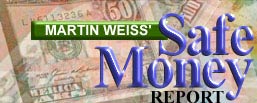Premium: This is the price you pay for the option. An expensive option has a high premium; a cheap one has a low premium.
Strike price: This is the price at which the option lets you buy or sell the underlying stock or stock index.
For example, a call option on ABC stock with a strike price of 90 gives you the right to buy 100 shares of ABC at $90. A call option with a strike of 110, gives you the right to buy the 100 shares at $110, and so on.
Similarly, a put option on ABC stock with a strike price of 90 gives you the right to sell 100 shares at $90.
Expiration: Remember, the option only gives you the right to buy or sell within a specific period of time. Once that time period is over, the option expires. And if the market has not moved enough, or if it has gone in the opposite direction from what you expected, the option could expire worthless.
This information is built into the brief description of the option. For example:
- A Microsoft January 120 call is an option to buy 100 shares of Microsoft stock at the price of 120, with this option expiring in January.
- A June 800 S&P; 500 Cash Index put is an option to sell one contract of the S&P; 500 Cash Index at 800, with this option expiring in June.
In The Money vs. Out Of The Money: The strike price of the option is critical. Let's assume you have a Microsoft call option (to buy the stock) with a strike price of $80. And let's say the stock is already selling at $90. That would immediately give you a profit of $90 - $80 or $10 per share. So we say this option is in the money.
But now let's say you had a Microsoft call option with a strike price of $100, with the current price of Microsoft still at $90. It just wouldn't make sense to exercise it. Why would you want to buy Microsoft for $100 with your option if you can get it for ten dollars less - $90 - just by buying directly in the market? This option is said to be out of the money.
There's also another term: near the money. For example: A call option with a strike price of $90, when the stock is selling for $90 1/2 or $91.
If you expect a moderate move in the stock, you are better off buying in-the-money options or near-the-money options. They'll cost more, but they will have a better chance of succeeding.
If you expect a steep move, you should buy out-of-the-money options. They'll be less expensive and provide a far better return.
Options Pros and Cons >>
More Options Terms



